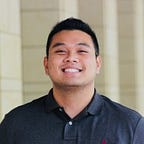Week 11— Research For/By Design — Part 2 — Primary Research
Introduction
For this week’s assignment, I was tasked to identify the key stakeholders around my group’s topic, select primary research methods, and conduct research ‘in the field’ to inform our design intervention. We were expected to select at least two methods to use over the week.
Key Stakeholders
My group members and I had first started on identifying the stakeholders that surrounded our topic “Public Transportation” and started to map out the different stakeholders by placing them into two categories: primary stakeholders and secondary stakeholders.
Primary stakeholders: Parties that hold direct interests/connections to the topic.
Secondary stakeholders: Parties that have a impacting influence to the topic, but indirectly.
As for Part 2 of our group project, we selected three primary stakeholders to focus our research on:
Local/city government
General public
Organizations
Primary Research Methods
Upon deciding which research methods seemed like a good fit for our stakeholders, my group members and I decided to choose three different types of research methods:
Observational studies
User interviews
User surveys
Local/city government
For this stakeholder, we have used observational studies as the primary research method to gather intel and opinions about posts made by several political figures that have influences upon the topic. Some of those political figures were Bill de Blasio, current NYC Mayor, and Andrew Cuomo, current NY governor.
We utilized social media posts from Twitter as the main source of our research as there were many public interests upon recent events based on public transportation in New York City. Many people had posted positive/negative feedbacks in response to these controversial posts as they determine the advantages and disadvantages surrounding the topic.
General public
For this stakeholder, we decided to conduct user surveys as the primary research method to gather quantitative data from local residents in NYC, people who have lived in NYC, and people who have experienced the public transportation system in NYC.
We have drafted the survey with a total of 16 questions. We have distributed the surveys by sending them to people who were friends of ours and we also asked if they could distribute the surveys onto their friends, families, and peers as well. We also distributed the surveys by posting a link onto Slack within the NYU IDM channel. As a result, we have received a total of 17 responses.
Organizations
For this stakeholder, we mainly directed our interests on the Mass Transit Authority (MTA) organization who has been in charge with New York City’s public transportations affairs. We decided to conduct an user interview with Professor Raf Portnoy, a current professor at NYU and the CTO of the MTA, as the primary research method to gather some expertise inputs and opinions from him as we delve deeper into the topic of public transportation.
As for the interview, we have created a questionnaire that contains five questions that focuses on the current problems and solutions within New York City upon the topic and emphasizing on the pain points and improvements that the CTO speaks based on his experience.
Here are the five questions that we have asked:
What is your background and experience in being the current CTO of the MTA?
What are some of the major issues that New York City is currently dealing with today when it comes to its public transportation system? (This could be in any form of transportation such as: subway/rail system, bus, commuter traffic, tolls, bridges, pedestrian walkways, bicycle lanes, traffic control, etc.)
What are some of the current solutions that are being practiced today to help resolve those issues?
What are some personal pain points that you have experienced or dealt with NYC’s public transportation? What would you like to see improved?
What drives some of the choices/decisions made when undergoing a project planned for NYC’s public transportation? Who has the authority to decide on the local, state, and federal levels?
Overview of Research Process
Here is a task flow map to visually demonstrate our researching process as a whole!
To view the full research board on Miro, please click on this link!
Drawing Conclusions
After going through extensive research and collecting data, we realized there was a common theme that all participants had encountered some unfavorable experiences and the difficulties/pain points that everyone faces when utilizing NYC’s public transit services. Cleanliness and safety were some of the main concerns that stood out to us as most people mentioned about their experiences. There is a lot of controversy about improving the system in NYC for the betterment of the general public and to become more progressive towards the future.
Please view the video above to see the overall presentation of our primary research process! :)
Self-Reflection Time!
Overall, this exercise was definitely an eye-opening moment for me as I had realized that there were so many concerns about public transportation and the gaps between the general public versus the government and the organizations behind the affairs.
During the researching process, I have to admit that it was a bit difficult to engage participation among choosing test subjects for our surveys, data scraping through social media posts, and scheduling interviews between key stakeholders. I wished that we had more time to gather more input and data to become more accurate with our findings and to better answer our undermining questions that we have about the topic. Though, my group members and I had realized there was a lot more to the process and learned a lot based from the available resources that we could find and utilize!
